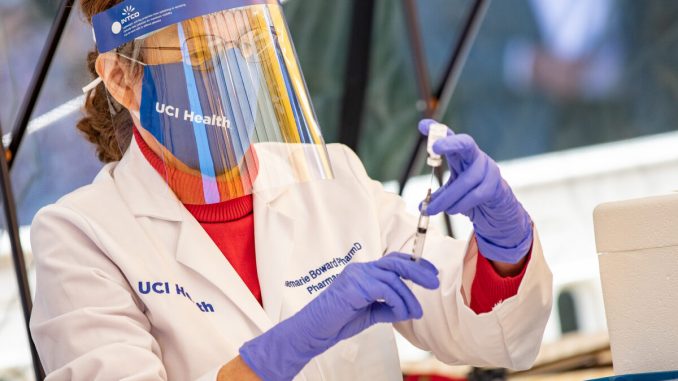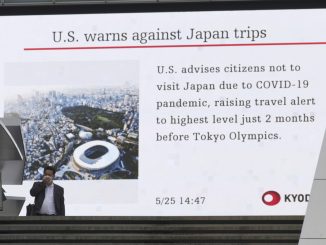

SANTA ANA—Orange County continued its promising COVID-19 trends May 12 as the Orange County Grand Jury issued a report critical of the county’s response to the pandemic.
The grand jury concluded that the county’s plans to handle a pandemic “had known gaps that were not addressed in accordance with the state, national and international guidelines.” The panel said county officials deemed a pandemic as “unlikely.”
Orange County chief executive Frank Kim defended the county’s response but acknowledged that every jurisdiction in the country could have done a better job preparing for the global pandemic.
The grand jury also faulted the county for failing to “establish comprehensive community-based task forces that included official threshold language communities in Orange County.”
Its report further said the county lacked enough resources to “enact key parts of the emergency plan such as handling urgent communications.”
The 19-page report criticized the county’s handling of personal protective equipment with some of it in the stockpile found to have been expired and some requiring “substantial repair and servicing prior to use.”
The grand jury reported that several Orange County Health Care Agency officials said “planning resources were re-prioritized on a recurring basis” and that the agency was “hollowed out” before the pandemic with several staff jobs left vacant “for extended periods of time.”
The grand jury concluded that “scaling up” resources by borrowing staff from other areas to respond to the emergency led to execution problems and errors.
Kim told City News Service that there was “no direction from office in the past year to reduce spending on pandemic preparedness. Like any governmental agency we always struggle with adequate resources to do what we have to do … every year we get budget requests that far exceed what’s available.”
Orange County declared a state of emergency in February 2020 before other counties. The county also focused its response to the underserved minority communities hardest hit by the pandemic by partnering with local nonprofits last spring before state officials made it a priority.
The county was among the first last spring to pass an ordinance requiring masks for employees in the food industry and some retail stores amid a public debate about whether residents should wear masks as officials worried about a possible run on the items similar to the one on toilet paper that could
make it difficult to outfit health professionals with PPE.
Kim noted that the county’s positivity rate among the underserved ZIP codes is about the same as the county’s overall positivity rate.
The county last year also doled out PPE to its local nursing facilities, which were lacking, to help quell the spread of coronavirus because officials recognized how much more vulnerable seniors were to the disease. The county also contracted with temporary agencies to provide nursing staff so ailing nursing facility workers could quarantine.
“Were we short of PPE at the beginning of the pandemic? Yes,” Kim said. “As was the entire United States of America. Did we try to dispose of things that were past due? Yeah, we try not to distribute past-due date PPE as recommended by the manufacturer. Did we provide PPE to nursing homes? Yes, we did. Did we provide it to hospitals and our law enforcement partners? Yes.”
Hospital officials “will tell you they were appreciative we were able to provide them with mobile field hospital tents” when the winter-wave nearly overcame bed capacity, Kim said.
“We also provided access to ventilators,” Kim said. “I was really proud of the effort. We’ll take the grand jury report seriously and write them a thoughtful response and if there are areas where we can improve then of course we will. But throughout the pandemic our numbers have been very good and
a lot of it has to do with the health care agency and the communities’ willingness to comply with safety protocols.”
Andrew Noymer, a University of California–Irvine professor of population health and disease prevention, said, “I just find the report vague. It’s a 19-page report with a cover page, table of contents, bibliography. The actual report is less than 10 pages and a lot of that is taken up by graphs of the budget of the relevant agencies over time. It’s just not very detail-oriented. But it asks some reasonable questions.”
Meanwhile, Orange County reported 42 new COVID-19 infections and logged six additional deaths May 12, raising its cumulative totals to 254,457 cases and 5,023 fatalities.
Hospitalizations due to the coronavirus ticked down from 84 May 11 to 83, while the number of patients in intensive care remained at 18.






Be the first to comment